Waler Pony
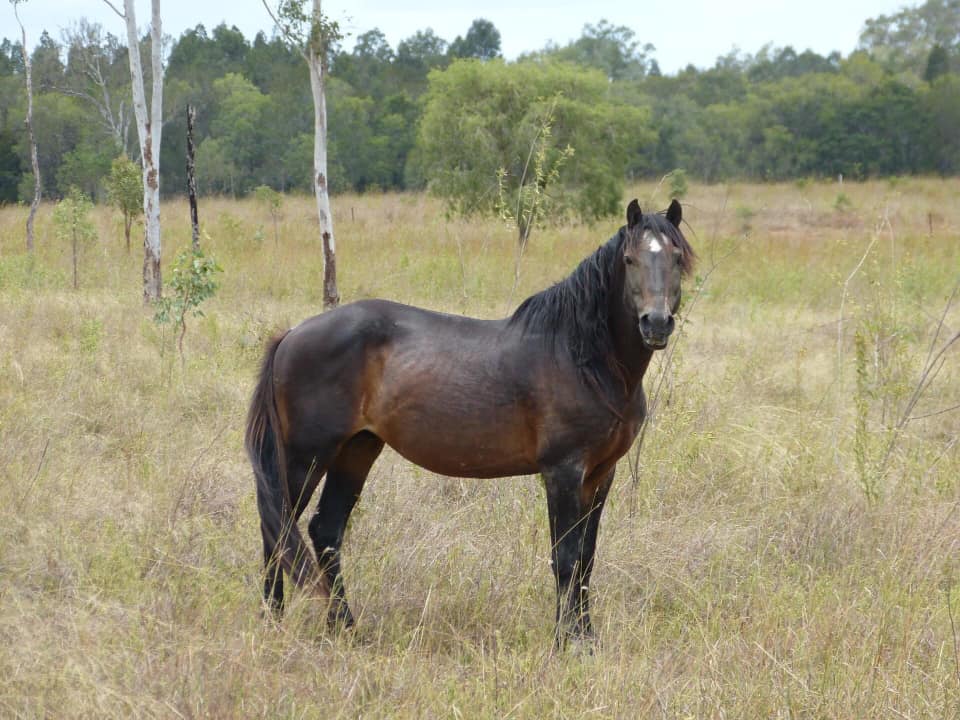
Image: Waler pony stallion Gallant.
Collecting information from the public is so important to saving rare breeds. Many are not members of breed associations, they are just doing their thing with their breed of choice, some to help the breed, some because the breed is the most suitable one for their purposes, some just out of interest.
For example, from a recent enquiry about Waler ponies via the Rare Breeds Trust of Australia we have this fascinating link to history. With all our help, and just one step at a time, progress can be made.
Our Waler Pony, as researched by Janet Lane
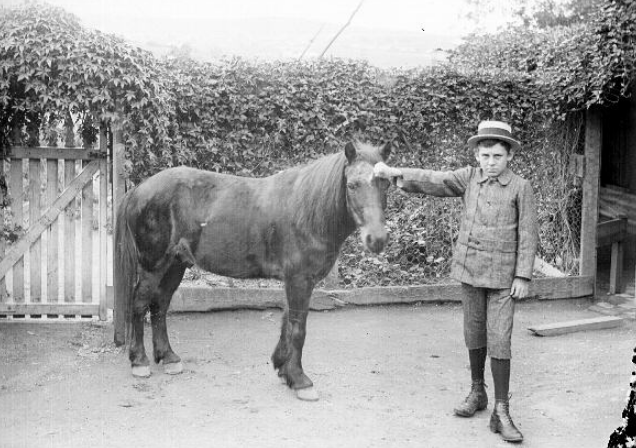
Ponies should all show Timor influence, with 10 to 14 hands the height range. They should have a true pony head (not large); small, slightly incurved ears, upright neck carriage, good Waler conformation (bone, tendon, rump etc) and have a good “saddle back” – not barrelled (round body) or dumped in the shoulder/wither area.
They should have some feather, although some may have the fetlock tuft only. The action should be softly elastic and long, not jarring nor short – so they are a comfortable ride. A mix of light and heavy build is acceptable.
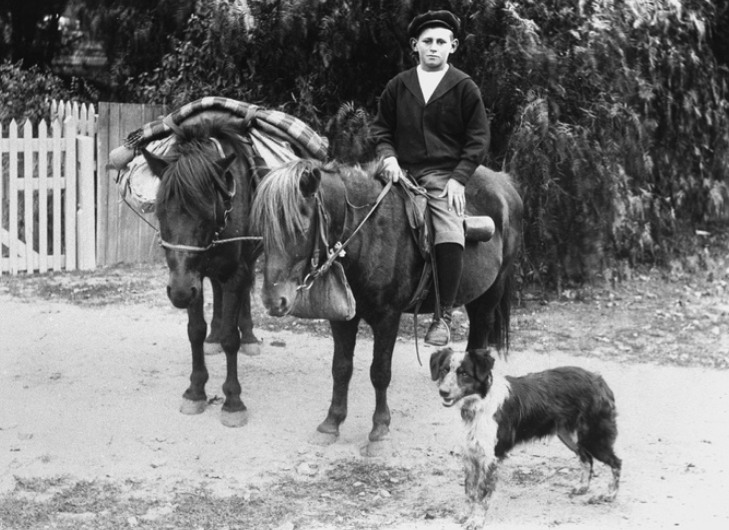
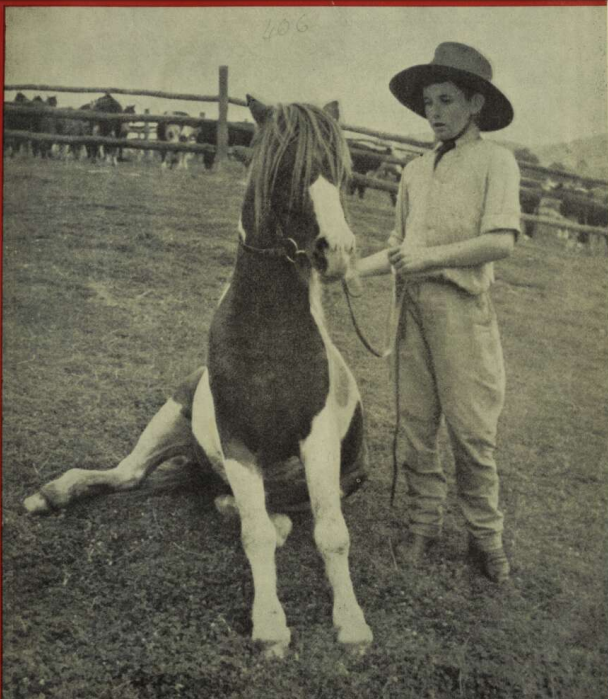
Images: Lance Lewis… photographed riding his pony with the company of his dog at the start of a journey to Victoria, 1898, State Library S.A.; Murray Pierce, aged twelve, has trained his pony to do numerous tricks. This photograph was taken by J. Thorn at a rodeo held recently at Cudgewa, about eight miles from Corryong, Victoria. Murray’s brother, Johnny, won the buckjumping championship at this rodeo and also at one held at Kyabram., Walkabout, 1st October 1946.
Ponies were once very popular in Australia, and also huge export trade for us, for racing and polo, before height rules for polo ponies were changed early in the twentieth century. They were used for children and for carriages and daily work such as stock and deliveries. Ponies found in Australia today lack the bone and temperament of our once all-rounder pony, created in the days when we had access to the best of the best in the heyday of pony breeding.
Quiet, sensible, trustworthy, and bonding well with their owners; strong, sound, and good doers; we would very much like to see this type of Waler come back into use. The future for them is perilous and if no effort is made to source old bloodline ponies and create a breeding programme they will sadly become a relic of history.
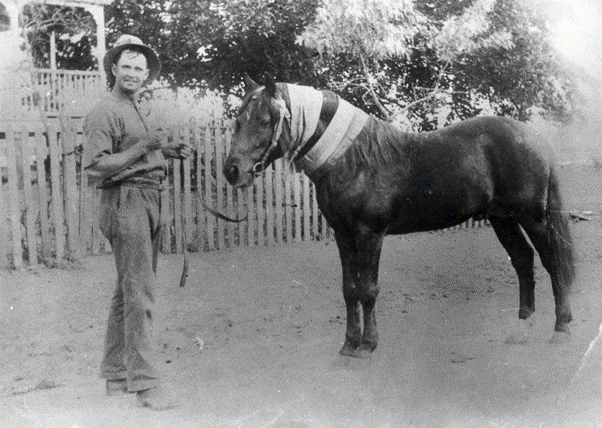
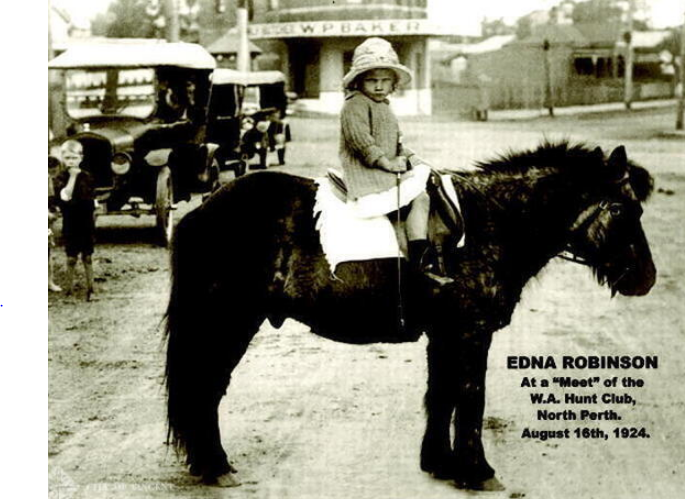
Image: Edna Robinson on her pony at a meet of the WA Hunt Club, 1924.
‘Edna Robinson was the youngest member of the WA Hunt Club having joined aged four. She is at a ‘meet’ in North Perth, standing in Charles Street near the former North Perth Hotel (just out of view to the left), where the members gathered regularly to commence or conclude their ‘hunt’. Angove Street is top right.
Her pony, seen here in full winter coat, was her usual means of transport to and from school. After the meeting she rode Toby back to the family dairy farm in Main Street, Osborne Park. She is at the intersection of Angove Street, Charles Street and Scarborough Beach Road (then Northbeach Road). Members regularly gathered at the North Perth Hotel to commence or conclude their hunt. She rode her pony ‘Toby’ to and from school each day. On this occasion she was made to carry a whip and was most unhappy about it. Hence, the somewhat surly expression on her face. … ‘City of Vincent.
What a cracker. Legends!